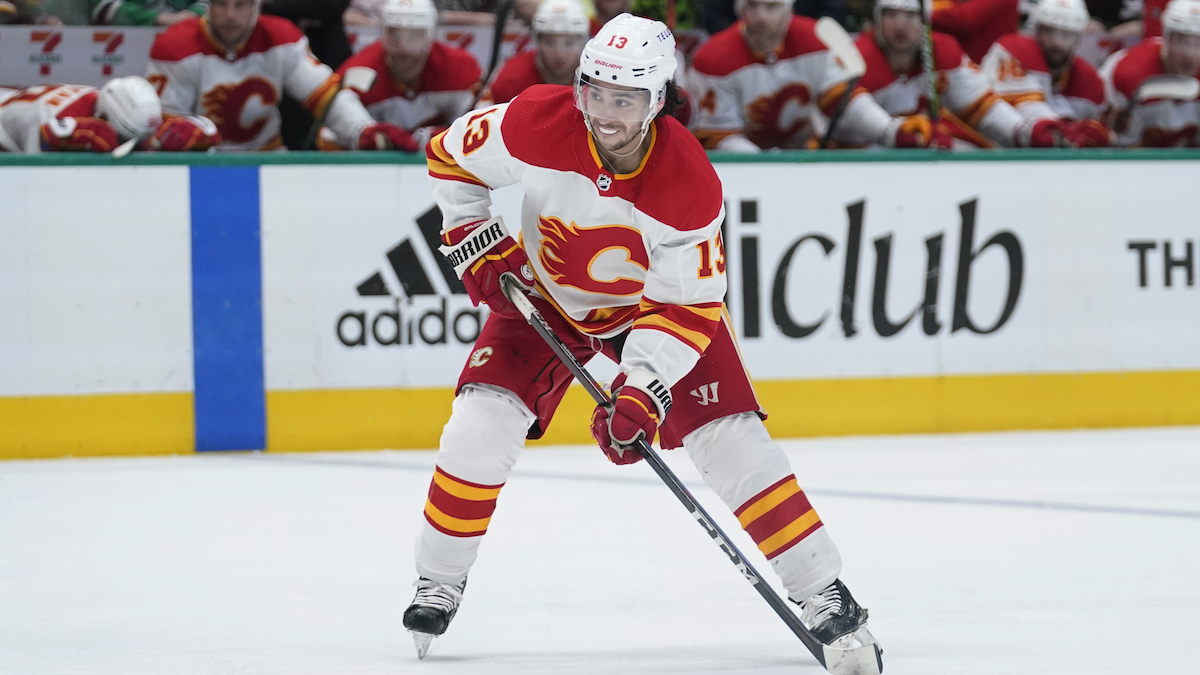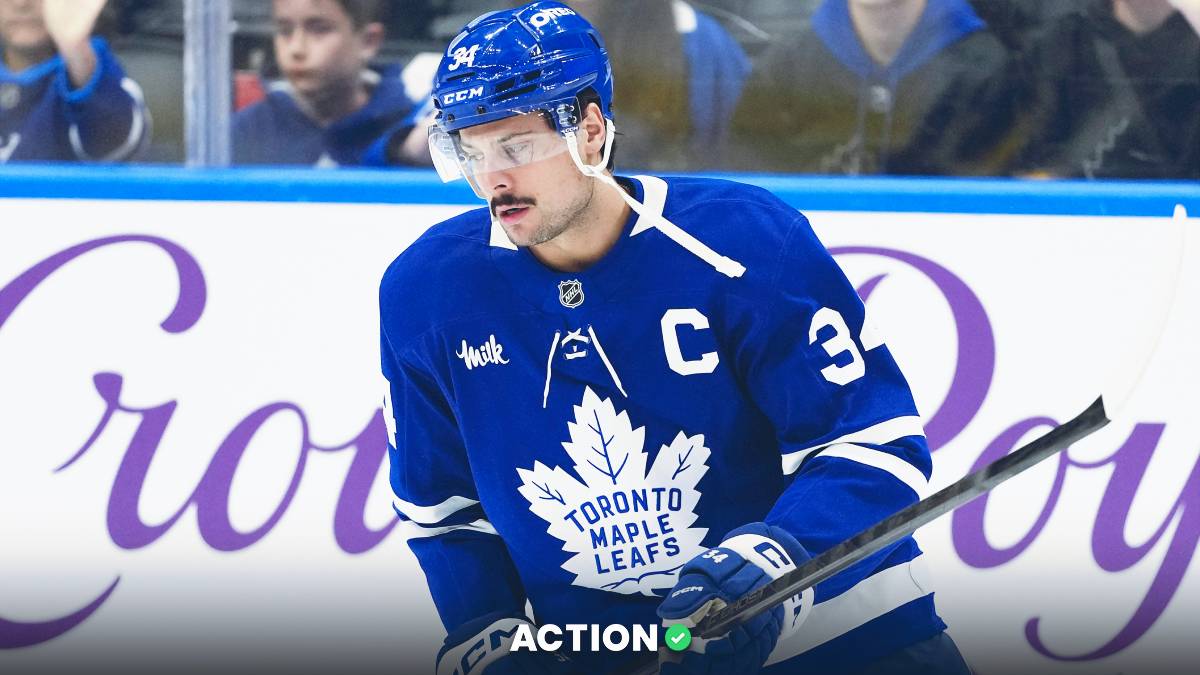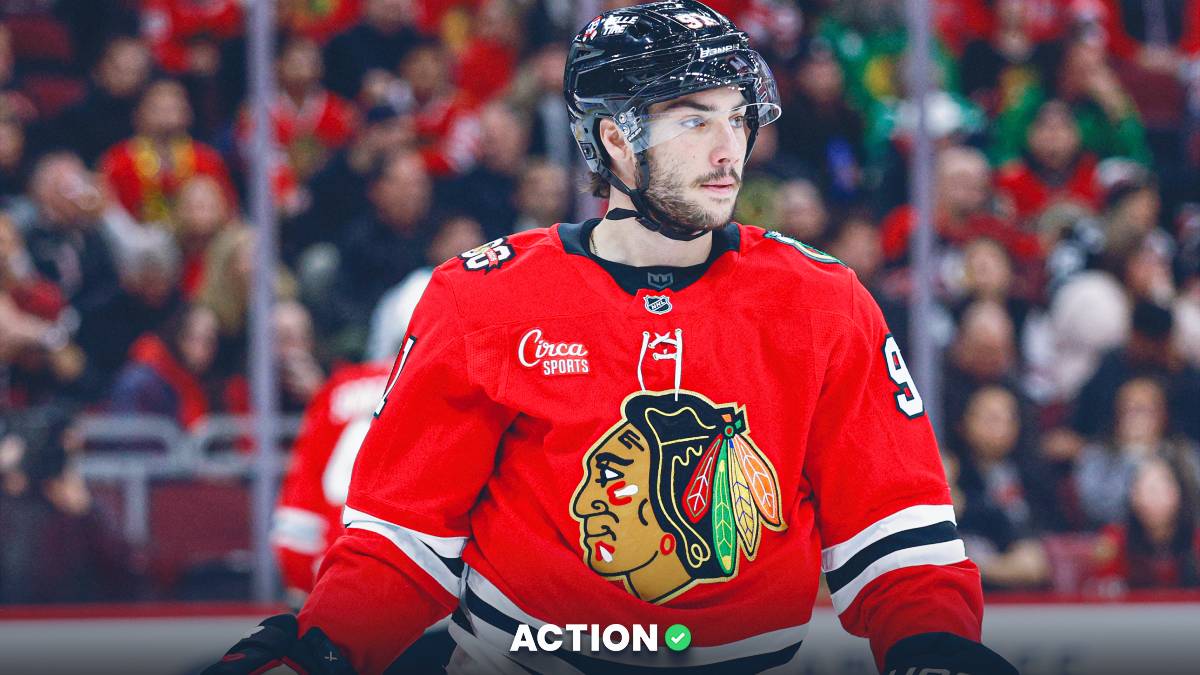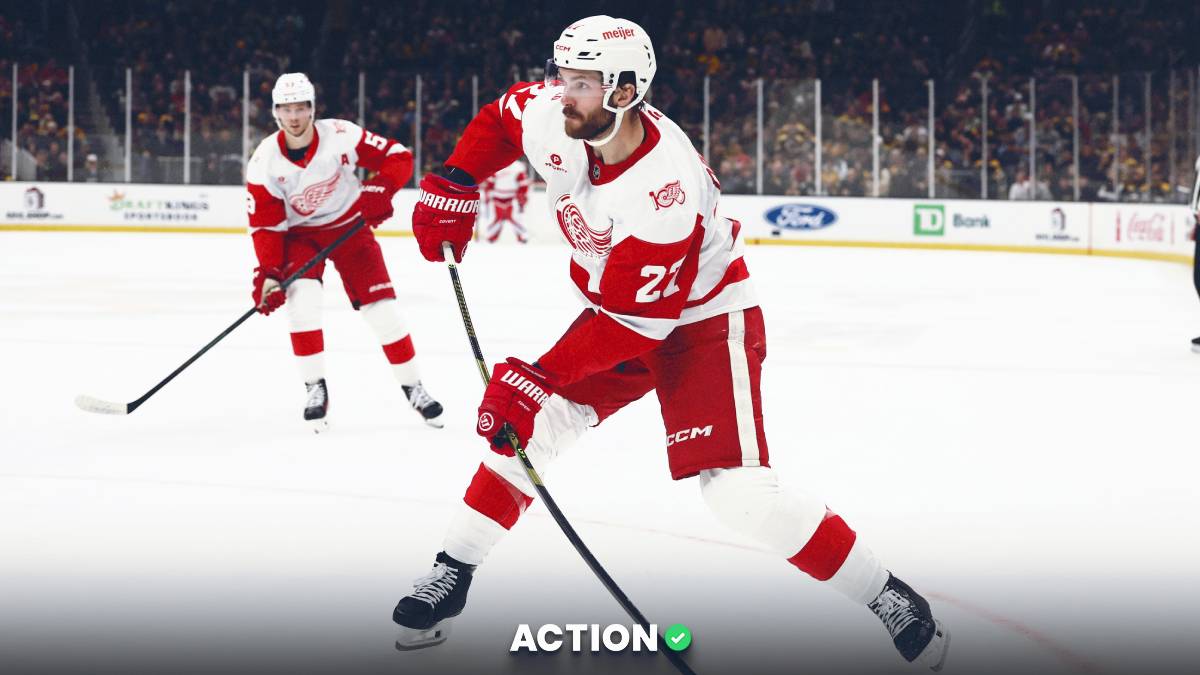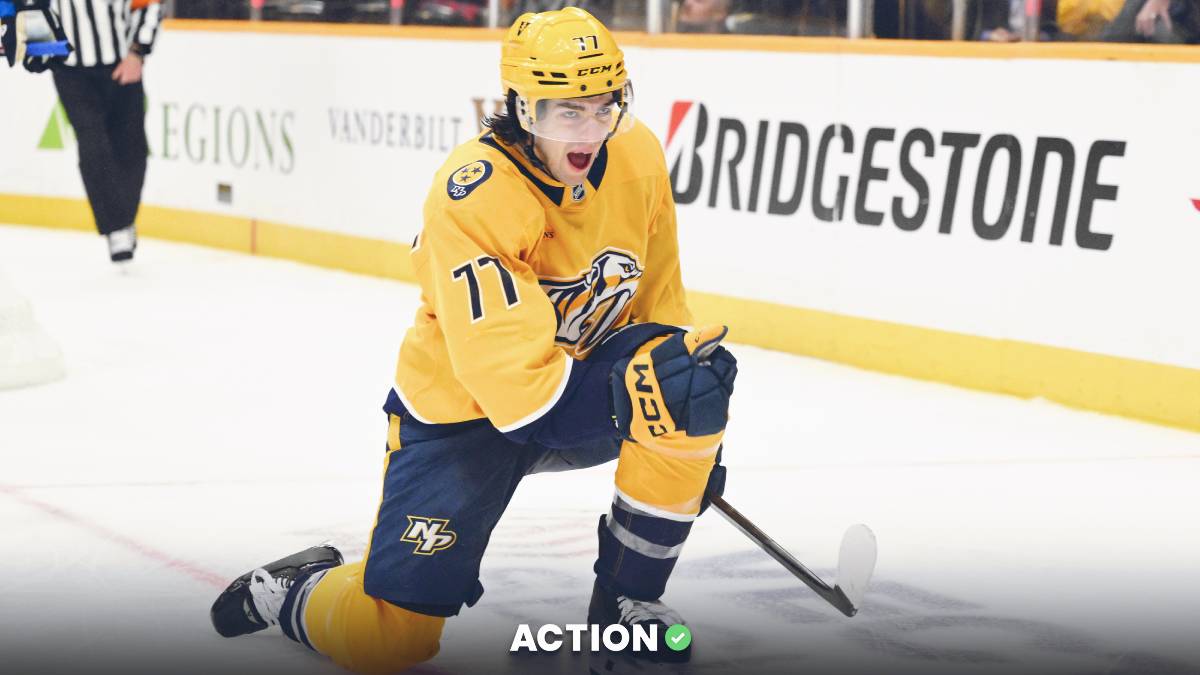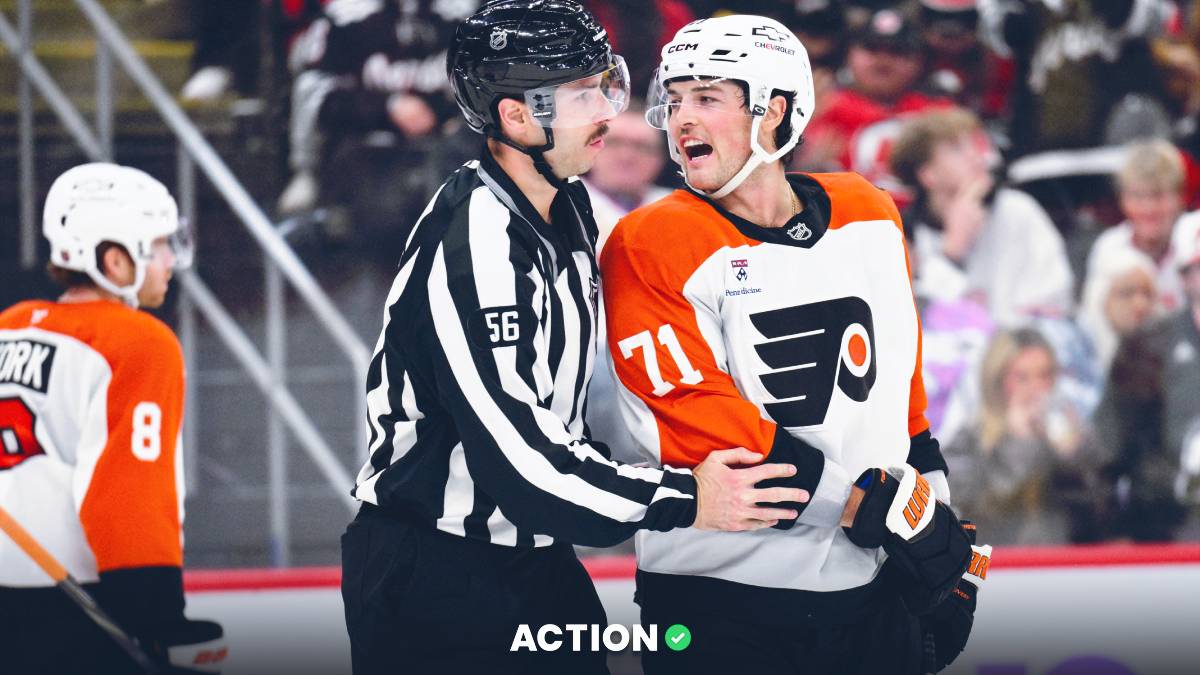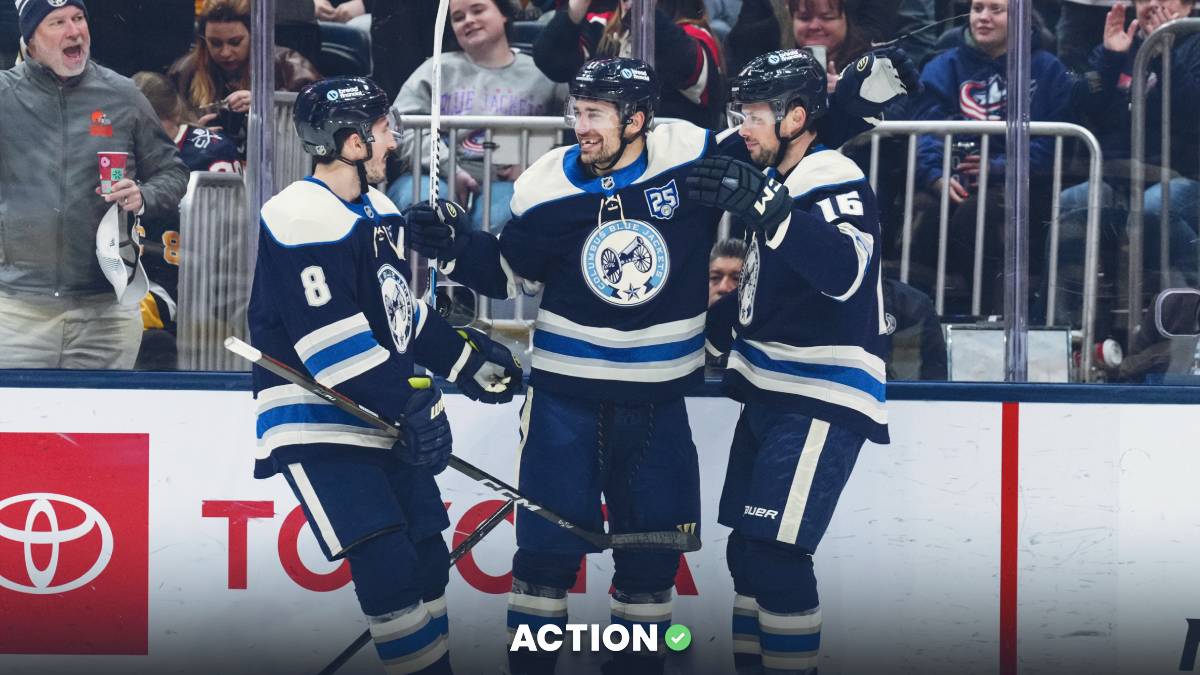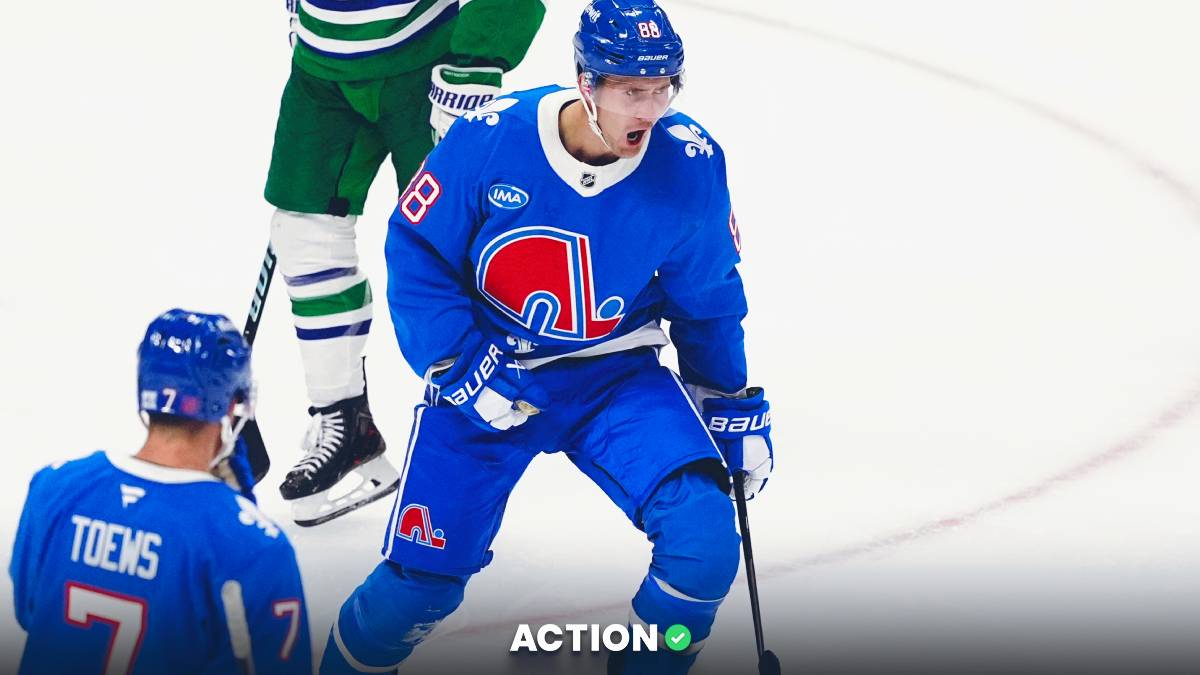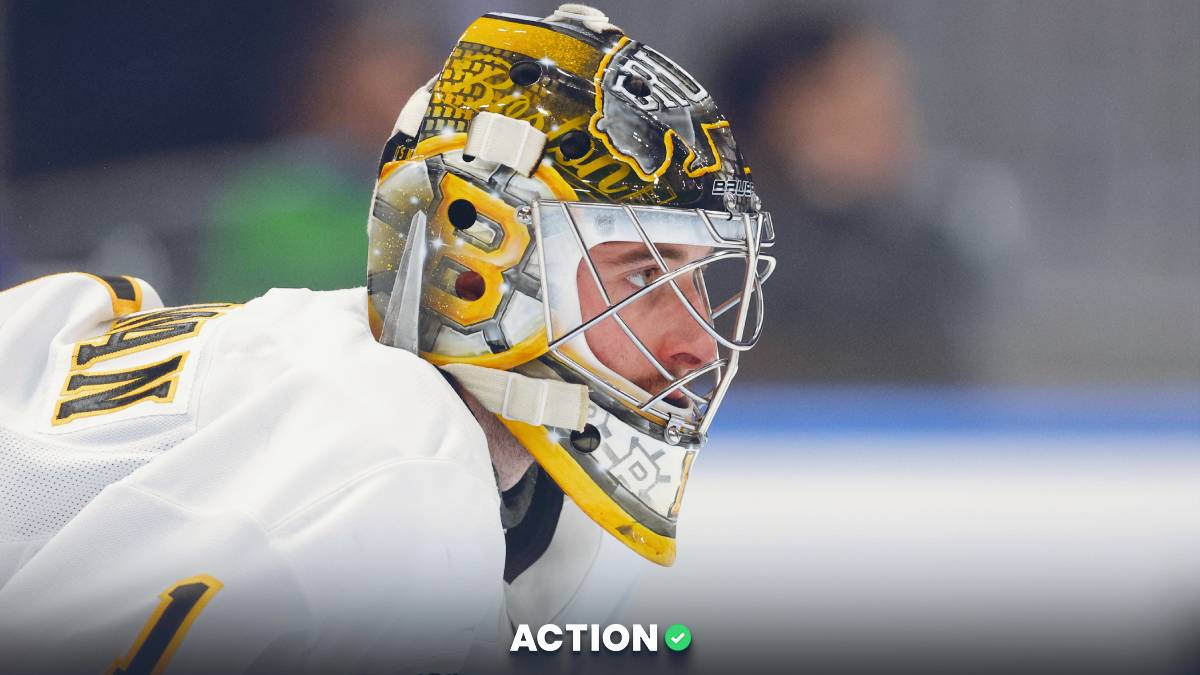This article is part of a series that aims to re-think how we look at the NHL Draft.
We will be looking at various statistics which have predicted which NHL prospects have over/underperformed their draft position.
First, we looked at scoring, then we looked at penalty minutes, and now we will look at height. We will be using a given prospect’s height to show that tall players have been overvalued in the NHL draft market.
Defining Expectations
To find which players have over/underperformed their draft position, we need a way to estimate the expected value of each prospect based on their draft position. This has been done in a previous article in this series which outlines the process behind this draft pick model (you can find that article here).
Note: We will be using Evolving Hockey's Goals Above Replacement (GAR) metric for this article. It's a catch-all metric that measures how much a player contributes to their team's performance. Higher GAR values represent more productive players.

The pick-value chart above gives us an expected value for each player based on their draft slot. Now, all we do is take the player's cumulative GAR in their first seven seasons and subtract off expectations and we have their GAR relative to expected.
For example, let's look at Nail Yakupov. Yakupov was picked No. 1 overall in the 2012 NHL Draft by the Edmonton Oilers. As a result, his expected GAR from the chart is about 65. Unfortunately, he only produced about 8 goals above replacement in the seven seasons after 2012.

As a result, Yakupov's value above expected is -57 (8-65). In other words, He dramatically underperformed his draft position. Yakupov is known as a generational draft bust, so a big negative number for him checks out.
Now all we have to do is apply this formula to every player drafted from 2007 to 2014, and start looking to see if any statistics can help us predict value above/below expectations.
The NHL draft market will have had all these statistics available to them, so if they are correlated with values above expected, it means the market was failing to account for them properly.
Height As a Bias
With each pick's expected value quantified, let's answer a simple question: Are tall players overvalued at the NHL Entry Draft? If so, we will see a relationship where short players are out-performing their draft position, while tall players will be producing less value than expected, on average.
Is that the case? When comparing the cumulative value above expected by prospect height we see the answer is yes.
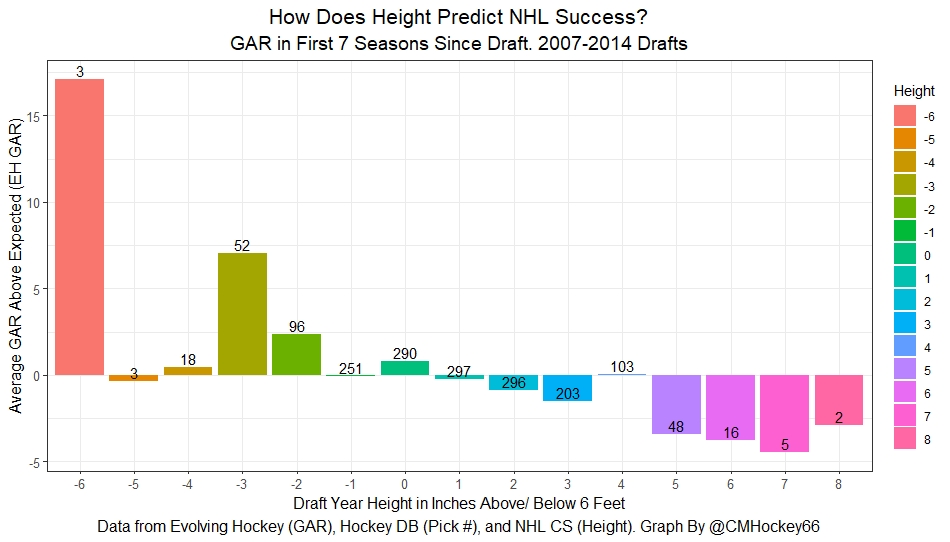
Though the general trend is imperfect due to some small samples, it still is clear. Value above expected is declining as height increases. Success rates, where each prospect is given either a 1 if they produced more GAR than expected based on their draft position, or a 0 if they produced less, offer a more clear picture.
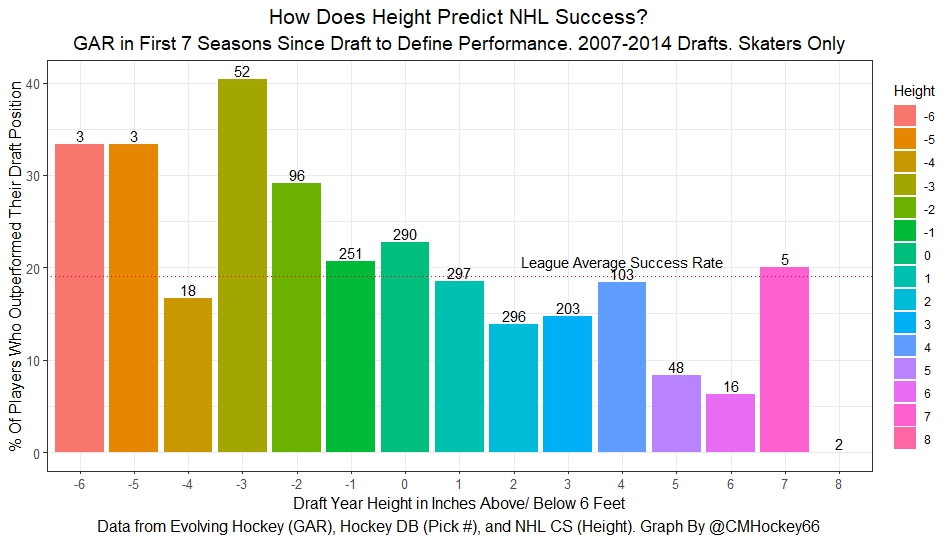
Essentially every cohort of prospects at 6-feet tall or below has out-performed the league average success rate, while the opposite is true for the cohorts above 6-foot.
The same relationship holding with success rates is important because smaller players are generally considered high-variance prospects. Everyone will say, sure, the payoff is huge can be huge if you select a player like Johnny Gaudreau, but in general, picking shorter players is risky as the general thinking is that they are boom-or-bust. With success rates, we can see that has not been the case. Not only have shorter players offered higher upsides relative to their draft position, but they have also been safer picks than their tallest peers, too.
Positional Effects
Another important question around height is if the effect is similar across the positional groups. Some people who believe small forwards are undervalued may not believe the same is true for defenders, since defense is generally a more physical position.
So are small players outperforming their draft position across both position groups? Again the answer is yes. (Note: I binned the heights this time to make up for my slicing of the data.)
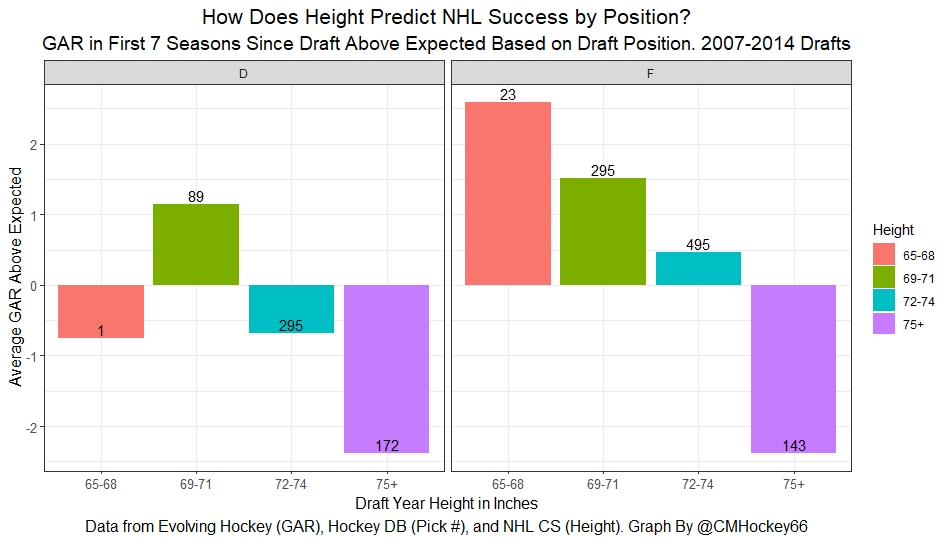
The general trend among forwards is mostly linear. The shortest group of forwards has produced the most value above expected, with that number declining as the cohort gets taller. In the end, the only cohort of forwards who have underperformed their draft positions as a whole is the tallest group of forwards.
More surprisingly, defenders follow the same trend (assuming we ignore that shortest cohort because it's only one player). The only group of defensemen that have produced more value than expected is the shortest cohort.
After that, as the groups get increasingly taller they underperform their draft position by a wider margin. Better yet, the smallest defenders have also been the safest picks, too.
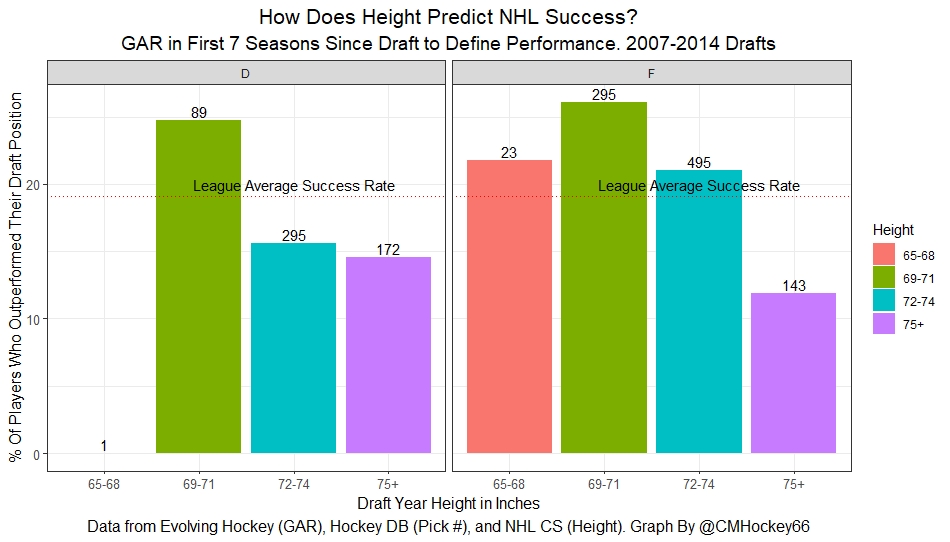
Only the tallest forwards under-performed the league average success rate, and only the smallest defenders out-performed the league average success rate.
Altogether, there are some important findings from these lessons. Tall prospects are almost certainly overvalued in the NHL draft market. Furthermore, not only have smaller prospects provided higher upsides relative to their draft position, but they have also been safer picks.
And finally, all of those things are true regardless of position. Even small defenders outperformed their taller peers by a wide margin, both in terms of upside and safety as draft picks.


